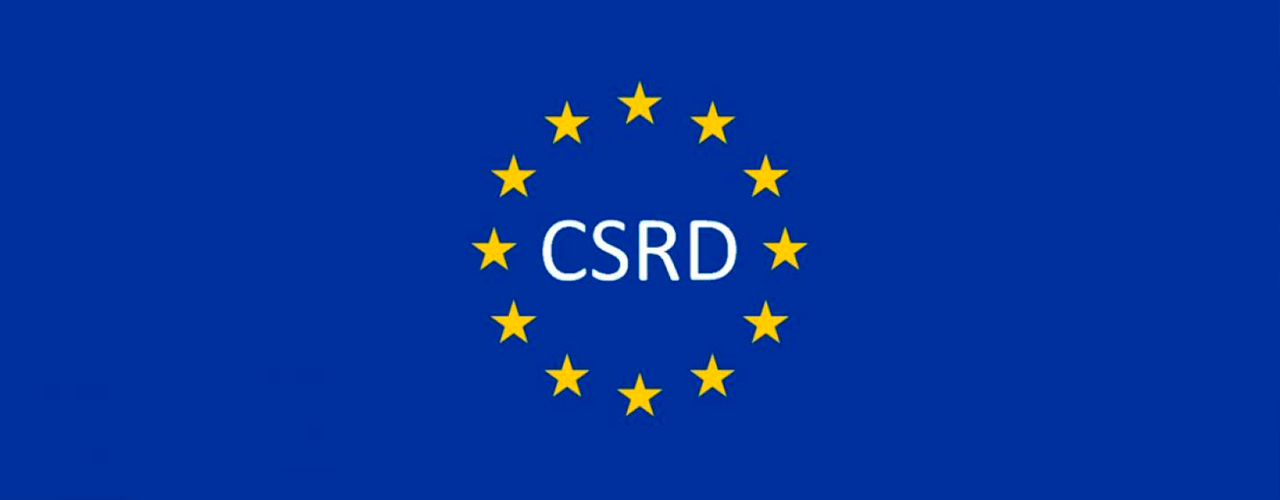CSRD Directive: Increased requirements for corporate sustainability reporting
As the sustainability agenda evolves and reporting requirements become more stringent, more initiatives are launched and additional regulations are introduced. There are now numerous directives, regulations, guidelines and standards with complex names, resulting in numerous acronyms, including CSRD.
You have probably heard the acronym before – perhaps in connection with ‘ESG’, ‘ESRS’, ‘scope 1, 2 and 3’ and many more. In this post, we focus specifically on the CSRD directive: what CSRD is, who falls under the directive, its purpose and how you can work with CSRD in the transport sector.
What is CSRD?
The Corporate Sustainability Reporting Directive (CSRD) is an EU directive that requires companies to report on sustainability. From 2024, all large and listed companies must comply with the ESRS standards for sustainability reporting. The directive aims to standardise sustainability reporting across Denmark and other EU member countries and increase transparency for investors and stakeholders. It ensures clarity in assessing a company’s sustainability practices in investments and partnerships, while preventing greenwashing in communication and marketing.
Which companies should report and when?
Gradual implementation of the Directive
The obligation to report on the company’s sustainability efforts and results will be phased in for the covered companies. This gives companies time to adapt to the new form of reporting, which requires extensive collection of relevant data.
It depends on the company’s size and whether it is publicly listed, when it is covered by the Reporting Directive:
January 1, 2024 (with the first report for the financial year 2024 in 2025) Large companies of public interest (primarily state-owned and publicly listed companies) with over 500 employees.
January 1, 2025(with the first report for the financial year 2025 in 2026) Other large companies with more than 250 employees and/or €40 million in net turnover and/or €20 million in total assets.
January 1, 2026 (with the first mandatory reporting for the financial year 2028 in 2029) Publicly listed SMEs are included but can opt out of reporting for 2026 and 2027. Therefore, full reporting must be conducted no later than the financial year 2028.
What does CSRD require of companies?
In addition to the companies directly covered by the various sustainability regulations, many other companies are expected to be indirectly affected. This is because reporting and data from subcontractors and other parts of the value chain will be necessary for the companies covered by the regulations to meet their reporting obligations.
The Reporting Directive is therefore expected to significantly impact the requirements placed on a company’s value chain – including suppliers – also known as Scope 3 emission.
How about CSRD and the transport sector?
The transport sector, a major contributor to global CO2 emissions, is facing urgent demands for accurate and transparent reporting standards. They must comply with the new European Sustainability Reporting Standards (ESRS) and document detailed data on environmental, social and governance (ESG) impacts. This includes everything from fuel consumption and emissions reductions to employee wellbeing and the role of management in promoting sustainability. In addition, the transport sector must address Scope 1, 2 and especially Scope 3 emissions, which cover all indirect emissions throughout the value chain, including those from subcontractors and customers. This requires extensive data collection and collaboration across the entire supply chain.
It is therefore very clear that implementing the CSRD directive in transport requires significant resources and a strategic approach to sustainability. Companies must formulate and implement sustainability strategies that integrate these new reporting requirements and ensure continuous monitoring and improvement of sustainability data. These efforts include investing in technology, training staff and forming partnerships to achieve sustainability requirements.
How can transport companies meet the new restrictions?
While many transport companies face current and upcoming restrictions that may seem overwhelming and unattainable, there are technologies that can contribute to the necessary reductions and reporting required.
Our solar solutions are an example of technology that can help the transport sector with this transition. They cannot stand alone, but they guarantee CO2 reductions, fuel savings, and access to green data, which can provide transparency and visibility. All of this is an essential step for both companies and the world towards a more sustainable future. By taking proactive steps and integrating advanced technologies into their strategies, transport companies can comply with the new legal requirements and ensure their long-term success and sustainability.
–
Interested in learning more about our solar solution for transportation, which can assist your organization in complying with new reporting standards and reducing CO2 emissions?
Visit greenenergy.pro or contact us here.










